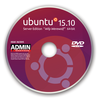
Lead Image © Juthamas Oonhawat, 123RF.com
Network virtualization with OpenDaylight
Light into the Darkness
Virtualization has now reached the world of network management, and it's no longer just for server farms. Network nodes like switches and routers are increasingly migrating into the abstract IT world, which smooths the path for centralized and extremely flexible network management. The open source project OpenDaylight is the de facto standard for software-defined networking, and this article introduces you to the structure based on a sample scenario.
Google and Facebook provide examples of the need to manage data streams on networks in a targeted way. The legacy network architecture was unable to manage the high-volume data streams; or, you might say the task of managing hundreds or even thousands of network nodes was beyond the capability of the existing software tools at the time. Software-defined networking (SDN) is a new approach to designing, integrating, and operating networks that makes these networks just as easy to handle as virtualized servers. The basis for this is abstracting the control plane and the data plane.
Control Plane vs. Data Plane
Understanding these two layers is a precondition for meaningfully deploying and implementing SDN. To better understand the approach, you can consider the example of a schedule for public transport. Before bus drivers start their routes, they need a plan of which routes to drive and when they need to be where. Although the bus is still at the depot, the routing center knows which bus will be operating on which route to reach its assigned goal.
In other words, it's all about preplanning. This is exactly what the control plane is all about, and the procedure works similarly on the network. Planning involves, for example, defining static routes. The network nodes need to learn how to handle other networks and how to connect to them. They need a plan!
Now, the network nodes (i.e., the routers and switches) know how to communicate
...Buy this article as PDF
(incl. VAT)
Buy ADMIN Magazine
Subscribe to our ADMIN Newsletters
Subscribe to our Linux Newsletters
Find Linux and Open Source Jobs
Most Popular
Support Our Work
ADMIN content is made possible with support from readers like you. Please consider contributing when you've found an article to be beneficial.







